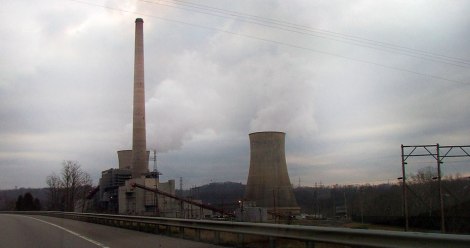“Power Company Loses Some of Its Appetite for Coal.”
This is the best headline The New York Times could come up with. “Eh, I don’t really want that much coal anymore,” says American Electric Power, shrugging. Not, “Holy God, the market is collapsing on this stuff SELL SELL SELL.” Just a quiet, “Oh well.”
“This has been a bad year for the coal industry,” the Times says. Indeed!
American Electric Power, or A.E.P., the nation’s biggest consumer of coal, announced that it would shut its coal-burning boilers at the Big Sandy electric power plant near Louisa, Ky., a 1,100-megawatt facility that since the early 1960s has been burning coal that was mined locally.
Big Sandy this year became a symbol of the plight of the coal industry nationwide. Strict new environmental regulations are forcing large utilities to spend billions of dollars to retrofit old coal-burning plants or shut them down, replacing them in most cases with equipment that uses cleaner-burning natural gas.
Those “strict new environmental regulations” are also known as the 40-year-old Clean Air Act, which grandfathered in the pollution of plants like Big Sandy until major retrofits were needed. Now, a major retrofit is needed.
In May, the power company withdrew a plan to spent $1 billion to retrofit Big Sandy so that it could continue to operate. But that would have required a 31 percent increase in electricity rates for eastern Kentucky residents.
On Wednesday, A.E.P. announced that it would close both of the coal-burning furnaces at Big Sandy in 2015, but left open the possibility that one of the units would be retrofitted to use natural gas. Area residents, if the Kentucky Public Service Commission approves the plan, would see an 8 percent increase in their electricity rates — to replace Big Sandy’s production with electricity from West Virginia — much less than the earlier plan.
For the 263,000th time, natural gas is eating coal’s lunch. That, as much as anything, explains why Big Sandy is likely shutting down: Natural gas generation is increasing cost-effective — especially when a nearly 50-year-old plant is finally forced to install significant anti-pollution equipment.
A total of 55 plants, including Big Sandy, have closed or have announced plans to shut down [in 2012], according to a count by the Sierra Club. That will leave 395 coal-burning plants in the United States, compared with 522 in 2010, according to the Sierra Club.
This, the Times would have you believe, is a loss of appetite. Investors are more likely to consider it food poisoning.




